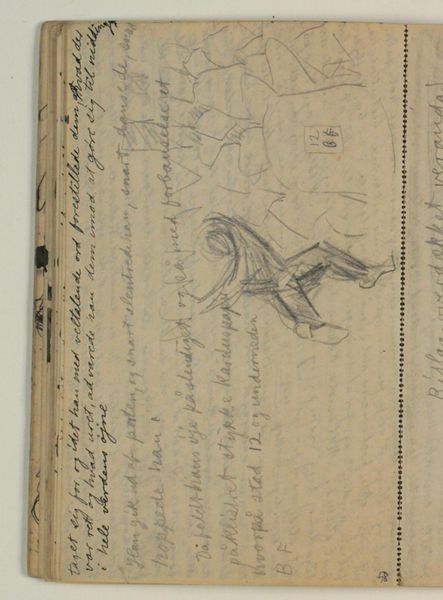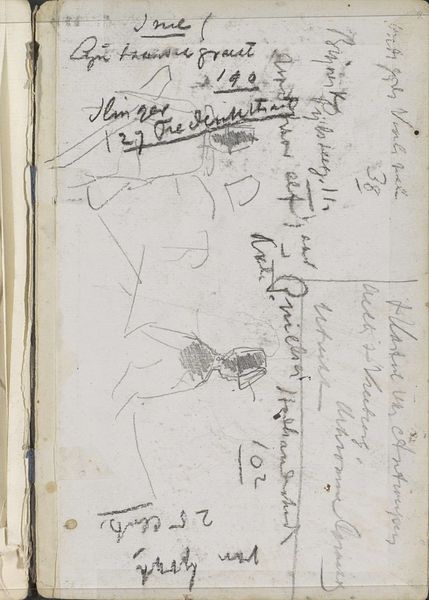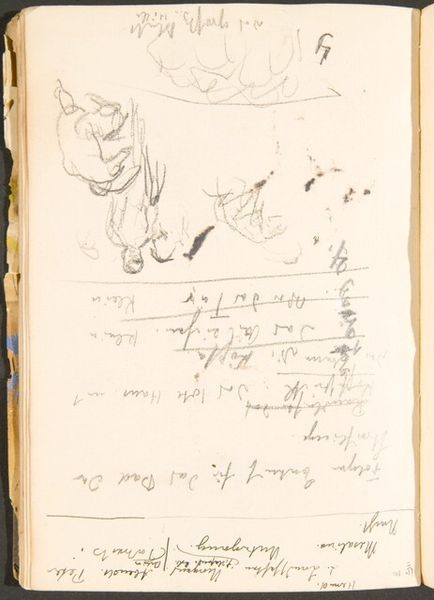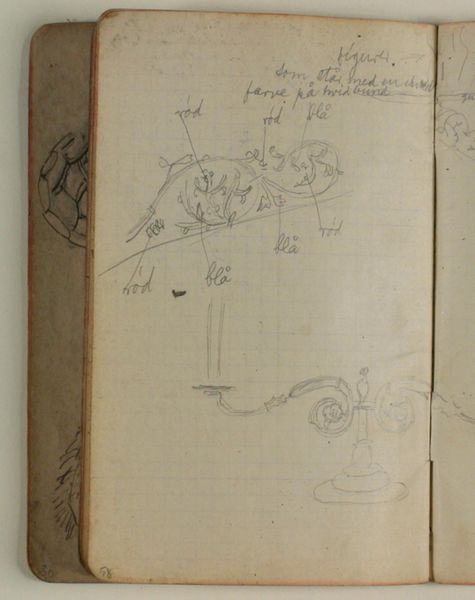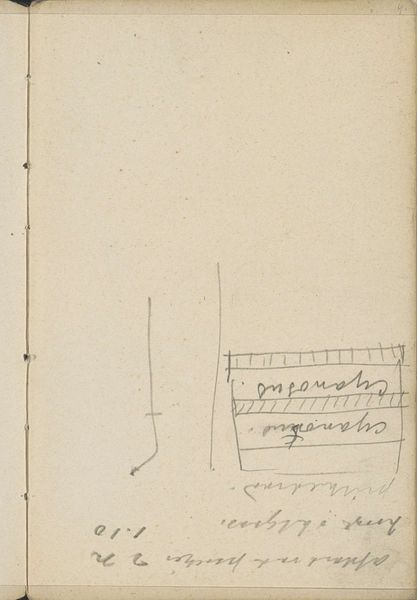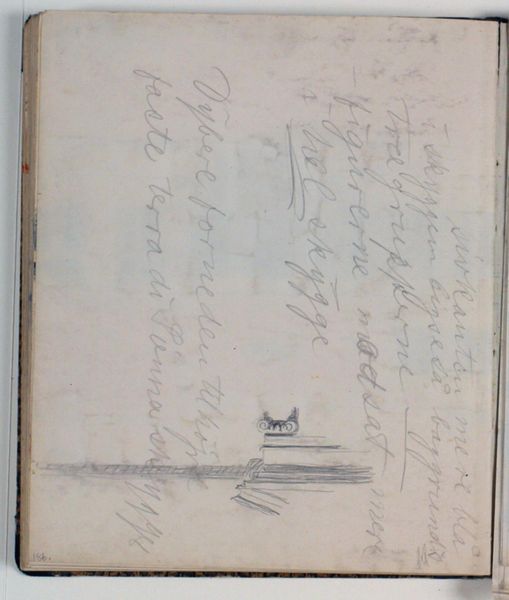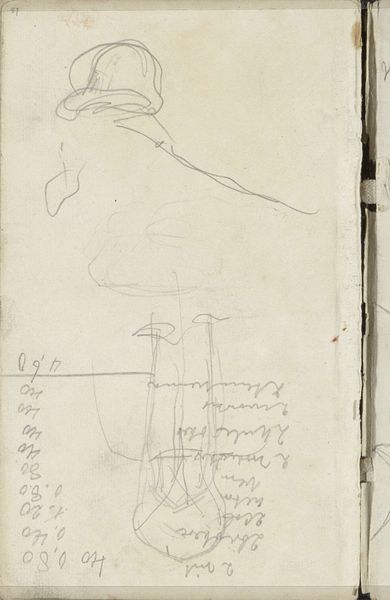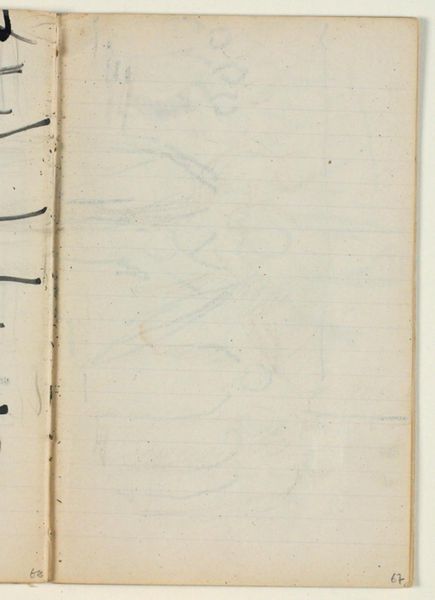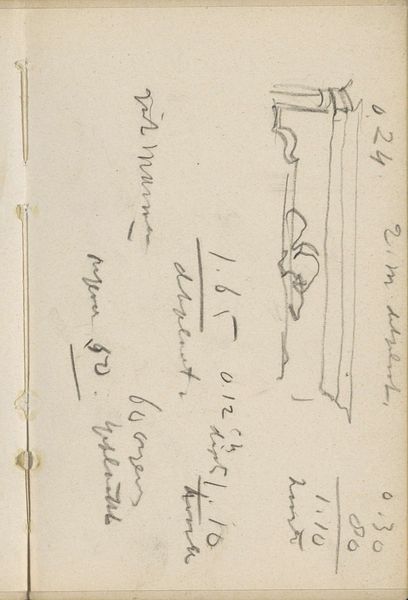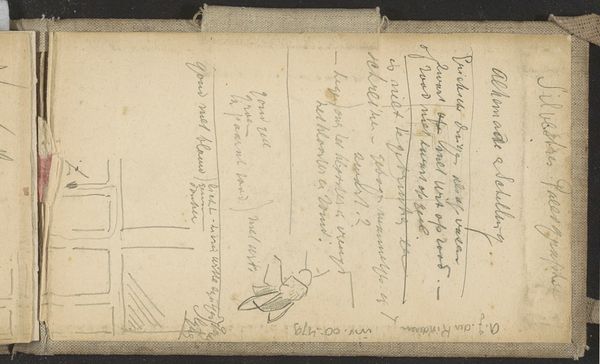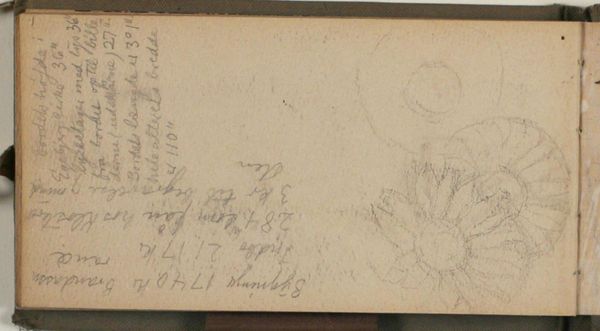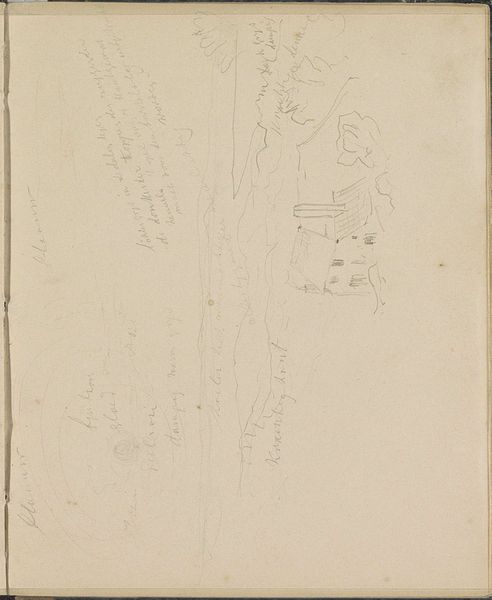
drawing, coloured-pencil, paper, ink, pencil
#
drawing
#
coloured-pencil
#
paper
#
ink
#
coloured pencil
#
geometric
#
pencil
Dimensions: 169 mm (height) x 109 mm (width) x 5 mm (depth) (monteringsmaal), 169 mm (height) x 109 mm (width) (bladmaal)
Curator: Today we’re looking at "Ornamentstudier. Notater", or "Ornament Studies. Notes," by Niels Larsen Stevns, dating from 1905-1907. It’s a mixed media drawing on paper, incorporating pencil, ink, and colored pencil. Editor: It has an intimate quality, like rifling through the artist's sketchbook. There’s an interesting mix of precise, geometric motifs with more free-flowing organic shapes. It’s almost… archaeological. Curator: Absolutely. Stevns was deeply interested in historical visual languages, drawing from Norse and early Christian symbolism. We see geometric patterns that echo those found in Viking metalwork and wood carvings. The rougher sketches might be interpretations of pre-Christian iconography. Editor: I notice the varying line quality. Some lines are assertive, definitive—perhaps laid down with a metal-tipped pen, others much fainter and tentative, suggestive of an exploration with soft pencils and colored wax pastels. It’s a record of his thought process made tangible. I want to ask: How did he get his hands on these older items? Curator: The inscriptions, “along the foot of a sun coffin, lid of a reliquary shrine", suggest he had access to museum collections or perhaps personal antiquities from the region and Northern Europe. He’s using his training to meticulously observe, not just for their aesthetic qualities, but to capture the symbolic potency embedded in these older ornaments. Note also his exploration of geometric configurations which reveal how past cultures encoded belief systems into ornament. Editor: Thinking about that early 20th-century context, what was the broader artistic purpose here? Was he just documenting historical styles, or trying to re-purpose these symbols for a new, modern aesthetic? The choice of fairly mundane, easily procured materials brings into question their relevance for a grand artwork that can capture cultural memory. Curator: Stevns was searching for a “pure” visual language, outside of the then dominating naturalistic style. He aimed to establish a distinctly Nordic symbolism that could be integrated into contemporary art and architecture and contribute to the development of the Nordic national identity. The way he layers these symbols shows how he believed images carried and conveyed important meaning to people over long stretches of time. Editor: It seems the making and the sketching, then, was perhaps a more vital creative act to Stevns than creating polished artworks with an overt sense of cultural message. Curator: Precisely. He sought to understand the power of visual tradition and imagery to establish an evolving, more informed cultural language of his time. Editor: It makes you think about how much information objects held in the past, even these studies point to that depth of belief through these sketched visual cues.
Comments
No comments
Be the first to comment and join the conversation on the ultimate creative platform.
